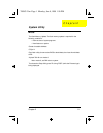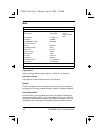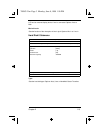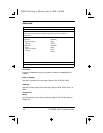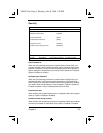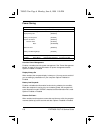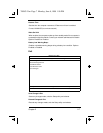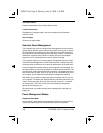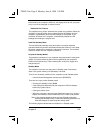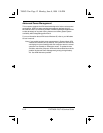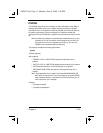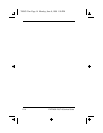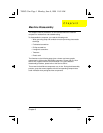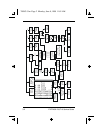
Chapter 2 2-9
determined by the computer’s HPM unit, the display shuts off until you press
a key or move the touchpad or external mouse.
"Automatic Dim" Feature
The computer has a unique "automatic dim" power-saving feature. When the
computer is using AC power and you disconnect the AC adapter from the
computer, it automatically dims the LCD backlight to save power. If you
reconnect AC power to the computer, it automatically adjusts the LCD
backlight user setting to a brighter level.
Hard Disk Standby Mode
The hard disk enters standby mode when there are no disk read/write
operations within the period of time determined by the HPM unit. In this state,
the power supplied to the hard disk is reduced to a minimum. The hard disk
returns to normal once the computer accesses it.
Peripheral Standby Modes
The peripheral connections in your computer also power down to save power
if there is no activity within the period of time specified by the computer’s
HPM unit for these devices. These include audio, serial ports, floppy drive
and parallel port.
Standby Mode
The computer consumes very low power in Standby mode. Data remain
intact in the system memory until the battery is drained.
There is one necessary condition for the computer to enter Standby mode:
•
Heuristic Power Management must be set to [ENABLED].
There are four ways to enter Standby mode:
•
Pressing the Standby hot key
Fn-F3
•
If the waiting time determined by the computer’s HPM unit elapses
without any system activity
•
Closing the display cover
•
When the computer is about to enter Hibernation mode (e.g., during a
battery low condition), but the Hibernation file is invalid or not present
Note: If the computer beeps but does not enter Standby mode after
pressing the Standby hot key, it means the operating system will not
allow the computer to enter the power-saving mode.
The following signals indicate that the computer is in Standby mode:
700SG-2.fm Page 9 Monday, June 8, 1998 1:26 PM



